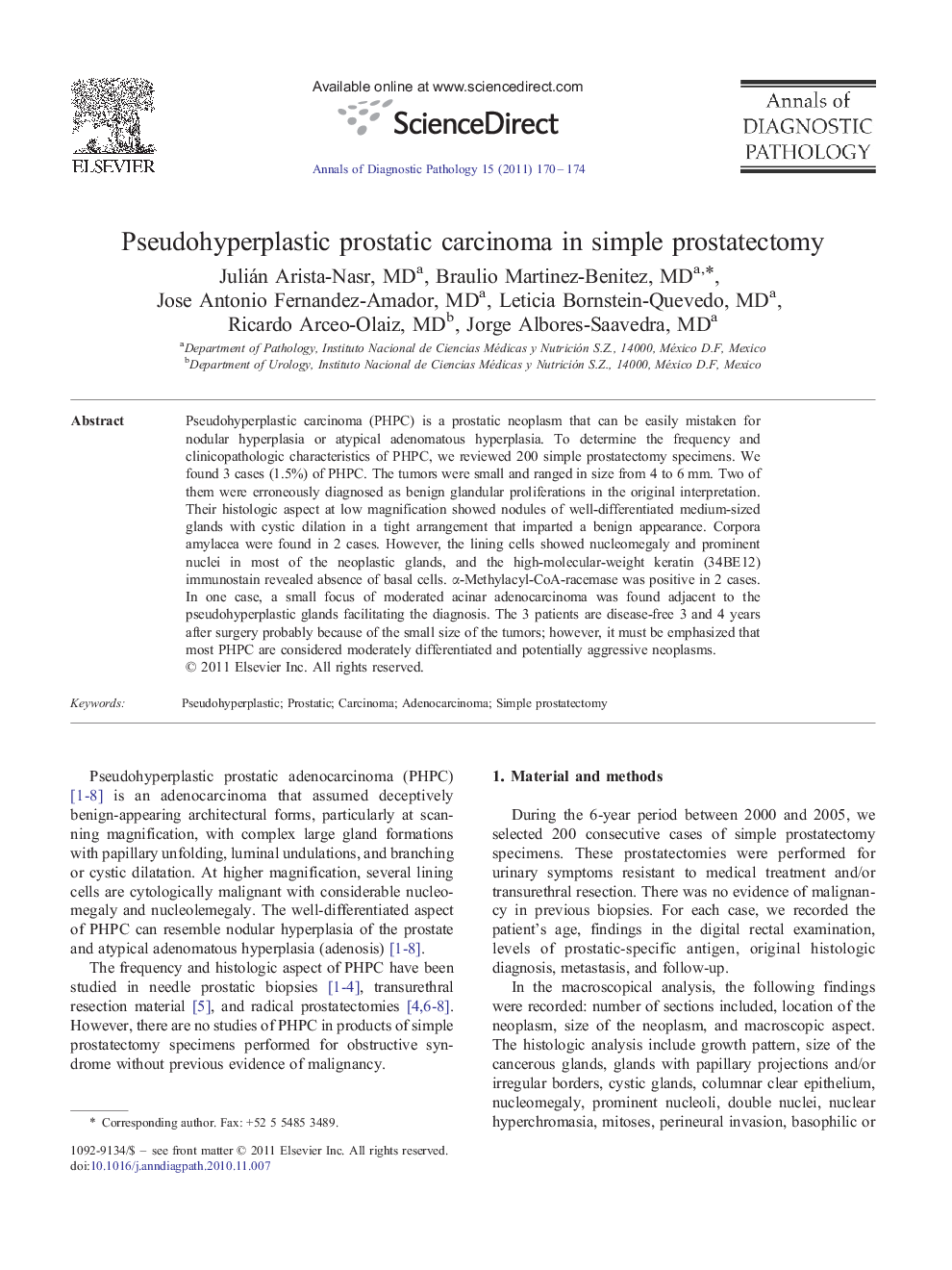| Article ID | Journal | Published Year | Pages | File Type |
|---|---|---|---|---|
| 4130470 | Annals of Diagnostic Pathology | 2011 | 5 Pages |
Pseudohyperplastic carcinoma (PHPC) is a prostatic neoplasm that can be easily mistaken for nodular hyperplasia or atypical adenomatous hyperplasia. To determine the frequency and clinicopathologic characteristics of PHPC, we reviewed 200 simple prostatectomy specimens. We found 3 cases (1.5%) of PHPC. The tumors were small and ranged in size from 4 to 6 mm. Two of them were erroneously diagnosed as benign glandular proliferations in the original interpretation. Their histologic aspect at low magnification showed nodules of well-differentiated medium-sized glands with cystic dilation in a tight arrangement that imparted a benign appearance. Corpora amylacea were found in 2 cases. However, the lining cells showed nucleomegaly and prominent nuclei in most of the neoplastic glands, and the high-molecular-weight keratin (34BE12) immunostain revealed absence of basal cells. α-Methylacyl-CoA-racemase was positive in 2 cases. In one case, a small focus of moderated acinar adenocarcinoma was found adjacent to the pseudohyperplastic glands facilitating the diagnosis. The 3 patients are disease-free 3 and 4 years after surgery probably because of the small size of the tumors; however, it must be emphasized that most PHPC are considered moderately differentiated and potentially aggressive neoplasms.
